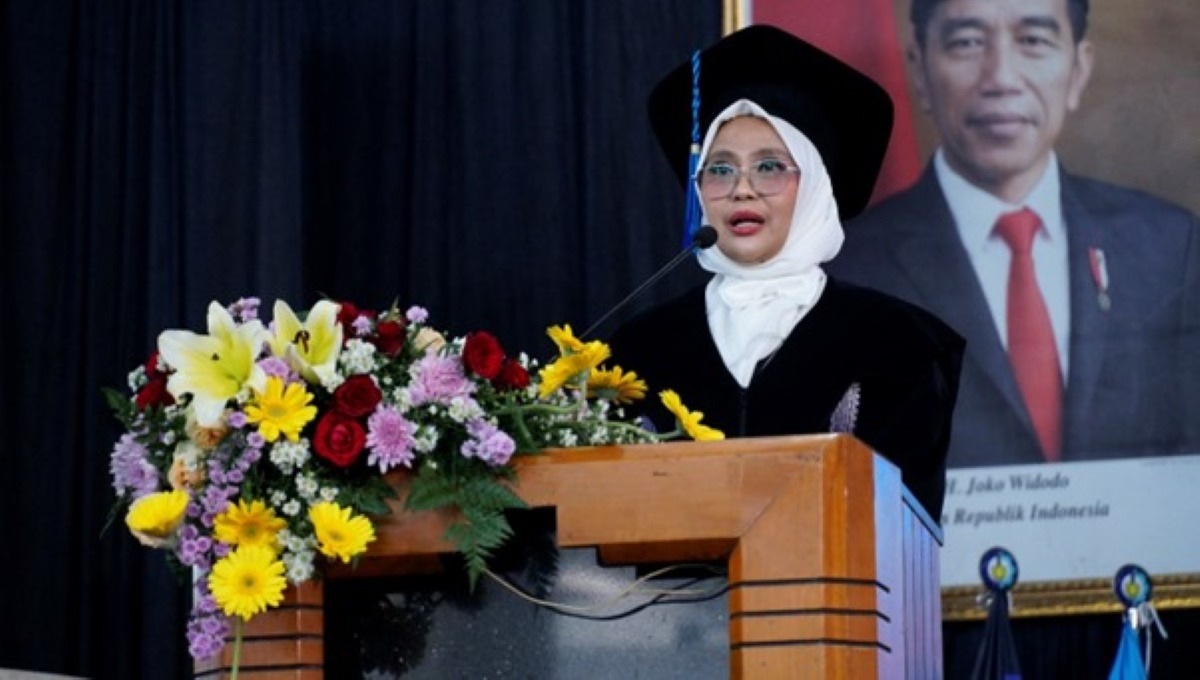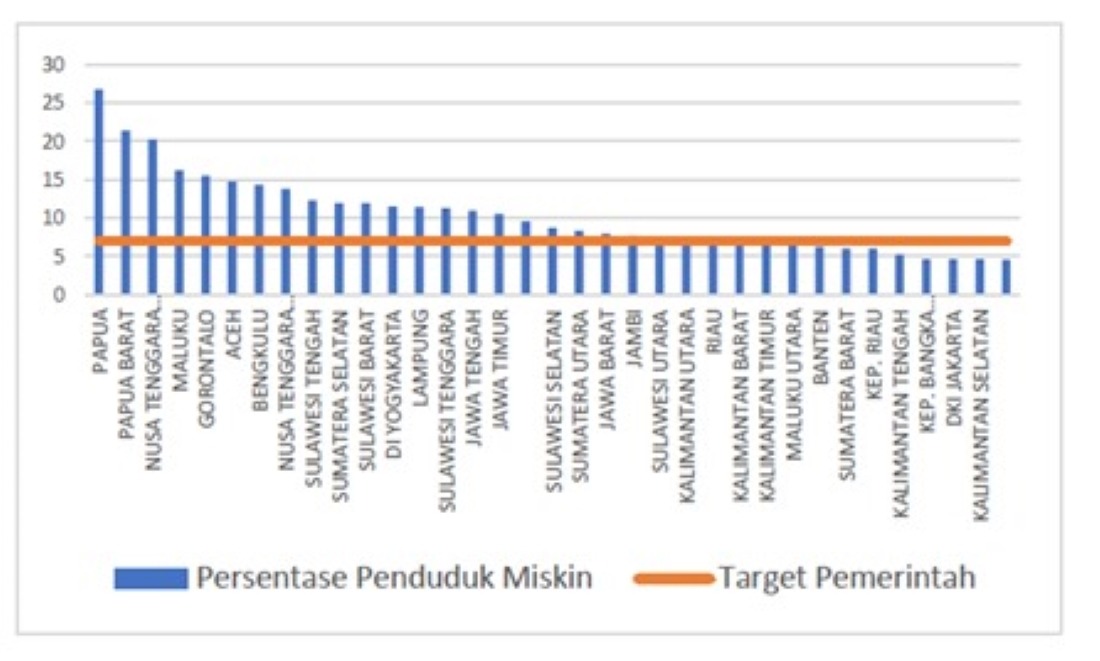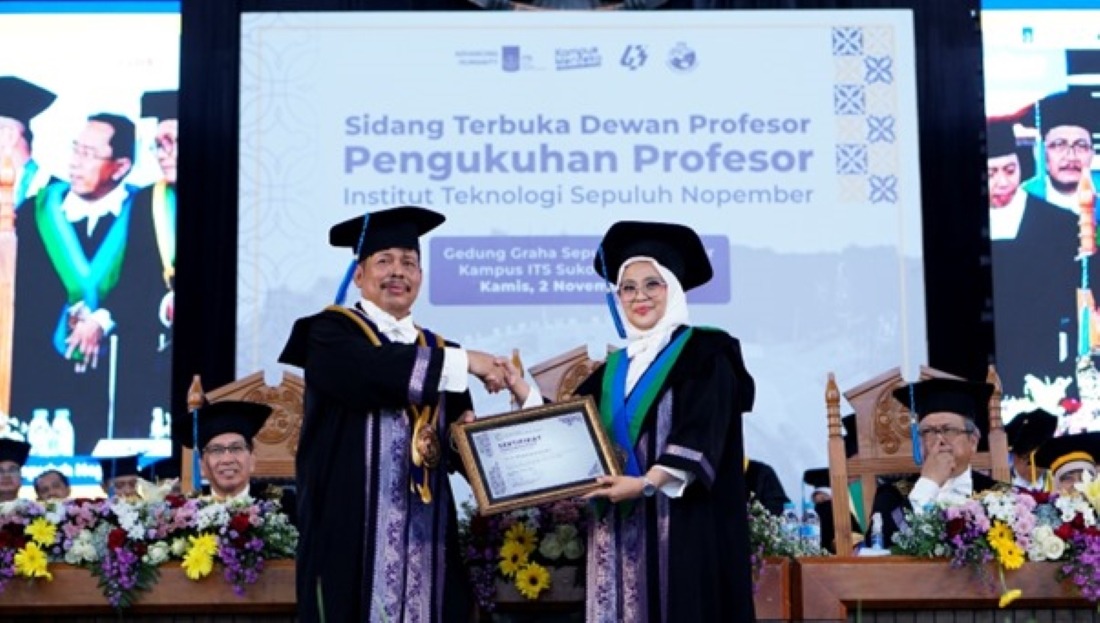ITS Professor Builds ZIOP Model for Poverty Analysis in East Java

Prof Dr. Vita Ratnasari SSi MSi presenting her scientific oration entitled “Integration of Category Data in Statistical Modeling to Support Decision Making.”
ITS Campus, ITS News – The development of statistical science has extended to many aspects of utilization, with one of its fundamentals being the analysis of categorical data. Recognizing this, one of the Professors at the Institut Teknologi Sepuluh Nopember (ITS), Prof Dr. Vita Ratnasari SSi MSi, researched the integration of categorical data in statistical modeling to support decision-making.
The professor from the Department of Statistics at ITS explained that categorical data is one of the commonly used data types, especially in national surveys. “Currently, the government also uses categorical data to make decisions to produce more precise and accurate policies,” she stated.
In this context, Vita addressed a case study related to poverty as the research object. Another reason, according to the 179th ITS Professor, is that poverty is currently a major issue closely related to achieving Sustainable Development Goals.
In her scientific oration, Vita explained her research using the Zero-Inflated Ordered Probit (ZIOP) model. Furthermore, Vita explained that the ZIOP model is a type of statistical modeling used to address the problem of excess zero values (zero-inflated) and ordinal scale data.
An alumnus of the doctoral program in Statistics at ITS, she explained that the ZIOP model is highly suitable for application in cases of poverty that use ordinal response variables. These variables consist of categories such as not poor, vulnerable poor, nearly poor, poor, and extremely poor. “This research will focus on poverty in East Java because currently its percentage of the population in poverty ranks 16th highest in Indonesia,” she stated.

Visualization of the percentage of the population in poverty in Indonesia
This Jember-born woman pointed out that the percentage of the population in poverty in East Java is 10.49%, still not reaching the government’s target of 7%. “Therefore, it is necessary to examine which variables are likely to reduce the percentage of the population in poverty in East Java,” she explained.
Supporting this statement, Vita found that variables influencing the poverty rate can come from various aspects. These range from demographic aspects such as age and gender to housing conditions such as a water source and floor area as indicators of a family’s economic situation.
Not only that, the lecturer who currently also serves as the II Secretary of the Department of Statistics compared her ZIOP model findings with the conventional Ordinal Probit model. “The result is that the ZIOP model is significantly better at explaining the data compared to the conventional Ordinal Probit model,” said the wife of Dr. Ir. Prasetyo Wahyudie MT.
Through her research findings, Vita hopes that in the future, the analysis of categorical data using the ZIOP method will make a significant contribution to the understanding and analysis of ordinal data. “It is expected that cases of data with excessive zero issues can still be analyzed in various fields of science to gain more detailed insights and information,” she emphasized.
 (From left) Chairman of the ITS Professor Council, Prof Dr Ir Imam Robandi MT (left), handing over the certificate of appointment as the 179th ITS Professor to Prof Dr. Vita Ratnasari SSi MSi.
(From left) Chairman of the ITS Professor Council, Prof Dr Ir Imam Robandi MT (left), handing over the certificate of appointment as the 179th ITS Professor to Prof Dr. Vita Ratnasari SSi MSi.
This researcher, who has been studying categorical data since her undergraduate studies, also shared the fact that currently, the development of modeling for categorical data is still very limited. This is contrary to the fact that there is already a wealth of data available in the field. “I hope the development of categorical data analysis will continue to be explored to address more issues in Indonesia,” she concluded hopefully. (ITS Public Relations)
Reporter: Faadhillah Syhab Azzahra
Related News
-
ITS Lecturer Introduces Madurese Culture to the International Stage
ITS Campus, ITS News — Continuing to show local wisdom to the world community, this time a lecturer from the Department
December 02, 2023 11:12 -
ITS Researchers Remind TKDN is Crucial for Economic Independence
ITS Campus, ITS News — The Domestic Component Level (TKDN) is the key to restoring the glory of the Indonesian
December 02, 2023 11:12 -
Strengthening Quality Education, ITS Professor Develops Adaptive Technology for Students
ITS Campus, ITS News — Differences in students’ abilities in understanding lessons are often a challenge for teachers in the classroom.
December 02, 2023 11:12 -
ITS Graduates Create Reverse Logistics Model for PET Plastic Waste Recycling
ITS Campus, ITS News — Doctoral graduate from the Department of Industrial and Systems Engineering, Sepuluh Nopember Institute of Technology (ITS) Dr. Yuniar
December 02, 2023 11:12
